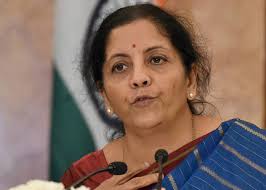 By Prof S.N. Misra in Bhubaneswar, February 5, 2023: Opening her budget speech, Nirmala Sitharaman inked the vision of a prosperous India, in which the fruits of development reach all citizens, especially women, SC & ST. This is in sharp contrast to free market economics which puts a premium on wealth and prosperity over socio economic justice and equity.
By Prof S.N. Misra in Bhubaneswar, February 5, 2023: Opening her budget speech, Nirmala Sitharaman inked the vision of a prosperous India, in which the fruits of development reach all citizens, especially women, SC & ST. This is in sharp contrast to free market economics which puts a premium on wealth and prosperity over socio economic justice and equity.
The Preamble to our Constitution & the directive principles in Part IV enjoin upon the state to provide adequate means of livelihood to all, minimize income inequality, provide early childhood care & education, and raise the level of nutrition by discouraging concentration of economic wealth & promoting distributive justice.
Given the fact that around 90% of our workers in both agricultural & industrial sector is unorganized & most vulnerable to manmade madness like demonetization and imponderables like Covid 19 and bottom 50% own only 15% of national income (World Inequality Report), it would be worthwhile to analyze to what extent the FM has walked the talk to meet their aspiration for socio economic justice and dignified living.
India’s growth story after economic liberalization has been ironically accompanied by jobless growth. For instance, the best five years in terms of average growth of 9% (2004-09) witnessed an employment growth of only .9%. This is largely because most of the growth was contributed by the services sectors which have very low employment elasticity. The same story repeated in the Modi era (2014-19) when an average growth was accompanied by 1% growth in employment.
The manufacturing sector where most of the employment can be generated has been rather stagnant. Except for the big industrial sharks, the MSME (micro enterprises) and unorganized units have been languishing in the absence of credit, technology and skill. The NMZ Policy of 2011, to increase the share of manufacturing from 16% to 25% in a decade and generating employment for 10 million has remained unrequited.
 In the above back drop, the FM must be complimented for significantly increasing capital. Expenditure by 33%, close on the hills of 35%of increase the previous year. A stimulus to capital expenditure through the multiplier effect has the best potential to boost income and employment. Nirmala has hiked capital expenditure from 5.9 lakh crore in 2021-22 to nearly double this year, which should be a sure-fire stimulant to generate employment.
In the above back drop, the FM must be complimented for significantly increasing capital. Expenditure by 33%, close on the hills of 35%of increase the previous year. A stimulus to capital expenditure through the multiplier effect has the best potential to boost income and employment. Nirmala has hiked capital expenditure from 5.9 lakh crore in 2021-22 to nearly double this year, which should be a sure-fire stimulant to generate employment.
Of this 10-lakh close to 5.2 lakh crorehas been earmarked for transportation which has witnessed significant improvement in connectivity in recent years. She has also increased the capital ex for railways from 1.6lakh crore last year to 2.4lakh crore this year. However, it remains to be seen to what extent these allocations are going to benefit the micro enterprises and unorganized units in terms of employment generation.
The saddest part of the budget is that it has whittled down the allocation for MNREGA from Rs 80400 cr to Rs 60000 cr. MNREGA Act of 2006 guarantees 100 days of work to unskilled work and close to 5 cr families are getting benefitted. The sharp reduction in people below poverty line from 46% in 1991 to around 23% now is attributed to this program.
The other area of serious concern is the scant attention paid in budget allocation towards the nutrition program. This is despite the damning revelation in the NFHS V report that India is home to 33% stunted children & 51% adolescent girls who are anemic. The ICDS program which was started in 1975 as a composite program for improving nutritional intake of children and pregnant and nursing mothers has been languishing in the absence of adequate budget allocation and lack of political will to combat this serious menace of impoverishment and nutrition.
Noting this concerns the PM potion Abhiyan was mooted to connect all the stakeholders through mobile apps and bolster community awareness. This is a program where the world bank has provided 50% of the funding with a view to reducing anemia amongst children and women at the rate of 3% per year. The program got hobbled due to the onset of the pandemic and the utilization of fund has been rather tardy.
The supply chain bottlenecks in regard to iron and folic acids, micro nutrients remain clogged. It is sad to note that the allocation for this year is almost same as last year, Rs. 20,055 Crores. After accounting for inflation, the real resources available for the program have actually come down. As if
this was not enough, the MDM program which has an edifying record in term of improving attendance of schools witnesses a reduction in allocation at 11,600 crore compared to 12,800 crores during this year.
 The National Education Policy 2020 has highlighted how Early Childhood education is in a dismal condition in the 14 lakh Anganwadis where around 30 Million children are expected to have their informal joyful education. The NEP has suggested that the Anganwadi workers who are expected to teach these children need to be properly trained and technology should be used in a big way to promote informal learning of children. The NEP has flagged the importance of proper foundational learning of every child by the age of 8, Since close to 50% of the children as per the ASER reports are deficient of basic writing, reading and numeracy skills.
The National Education Policy 2020 has highlighted how Early Childhood education is in a dismal condition in the 14 lakh Anganwadis where around 30 Million children are expected to have their informal joyful education. The NEP has suggested that the Anganwadi workers who are expected to teach these children need to be properly trained and technology should be used in a big way to promote informal learning of children. The NEP has flagged the importance of proper foundational learning of every child by the age of 8, Since close to 50% of the children as per the ASER reports are deficient of basic writing, reading and numeracy skills.
Sadly, the allocation for school education has increased by only 8% and the overall allocation to education stands around the historic low of 3%. This is despite recommendations by the Kothari Commission in 1966 and Prof Amartya Sen’s fervent call to increase allocation to education from 3% to 6%. Nirmala in the last budget had promised that a few Anganwadi would be improved.
OIfact that most of the Anganwadis are in a deplorable condition infrastructure wise with most of them not having proper drinking water and a proper roof to protect children against the vagaries of nature, she has completely left the early childhood sector and school education from the bounties of budget allocation.andemic clearly reveals the precarious condition of our primary health care infrastructure.The national health policy had suggested that the allocation to health should be increased from 1.5% to 2.5% by 2023. However, looking at the budget papers one finds that the increase is incremental at 1.6% only.
Prof. Richard Musgrave, an authority in public finance, implores on every finance minister to ensure allocation priority to the social sector and merit goods like quality primary education, health care and sanitation. While India spend less that 5% on education and health, most emerging market economies and developing countries spend more than 10%, which has a concomitant impact on Human Development Index.
Most discerning observers believe that unless India invests significantly more in improving human development capabilities, ups its antenna in terms of skilling and digital access, the expectation of Amrit Kal and $ 5 trillion economy will remain a pipedream.



Leave a Reply
Be the First to Comment!